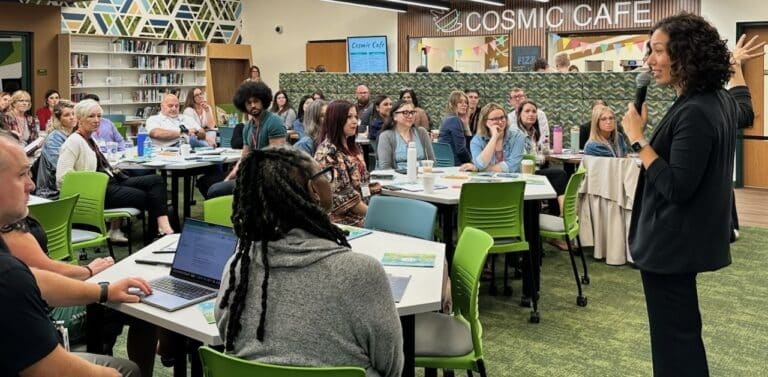When students are not healthy, either physically or mentally, their ability to learn is severely compromised. Poor health negatively impacts attendance, which is central to academic success, as well as student grades, test scores, classroom behavior and, ultimately, graduation rates.
Districts and education organizations in Ohio are increasingly recognizing the importance and value of connecting students with the kinds of health care services that address health-related issues that interfere with learning and well-being and go well beyond what might typically be expected of schools and districts to provide through school nurse’s offices or clinics.
A whole child-focused approach to education has the power to transform the lives of students and their families. Through this approach, schools across Ohio are becoming centers of safety and positivity, where students trust that their needs will be honored and cared for, that they will be challenged to be their best selves personally and academically and that they will be supported no matter their background or circumstances.
KnowledgeWorks is committed to building a learning culture where schools, districts, social service agencies, health care providers, community organizations and others work together to ensure that young people in their communities have every opportunity to thrive.
This story is one in a thematic series that highlights the strategic and practical considerations, challenges and success factors that characterize efforts to comprehensively meet the needs of children in and out of the classroom. Centering on the experiences of six districts located in a diverse array of Ohio communities, these stories show what is possible when we care for our students as people while fulfilling the educational mission of our schools.
Similar goals, diverse approaches
Connecting students with health care services they might otherwise struggle to access represents an important component of districts’ overall approach to caring for the diverse needs of their students. How districts facilitate the provision of these services varies, as do the specific services they are able to offer.
West Clermont School District, east of Cincinnati, operates a dedicated school-based health center in partnership with a local provider, HealthSource of Ohio. Located in one of the district’s middle schools, the Wolves Wellness Center provides medical, dental, vision and behavioral health services to district students of all ages (as well as district staff).
The district sees the center as a way to provide a vital access point to care for all students. For some, it is a convenient supplement to services from their primary care provider; for other students, the center may be their only health care resource.
Through a more hybridized approach, Wickliffe City School District, in Lake County, has also partnered with local health care providers to ensure that students and the community have access to health care services. The district’s Family Resource Center offers a wide range of services and resources that address both health and non-health related needs. Conceived of as a “one-stop shop” to support the entire community academically, materially and physically, health care services are available to anyone who comes to the center. Two providers, Crossroads Health and Signature Health Inc., have offices in the center and they offer recovery, mental health care and primary care services.
The district sees the center as a way to provide a vital access point to care for all students. For some, it is a convenient supplement to services from their primary care provider; for other students, the center may be their only health care resource.
Other districts rely on Educational Service Centers (ESCs) to provide intensive health care supports. In Greene County, the Greene County Educational Service Center provides full-time school-based mental health services to districts in the county. Additionally, the ESC provides specialized early childhood mental health services, which are made possible through grant funding.
All told, these varied approaches to expanding access to health care in schools reflect efforts to leverage local and regional resources and partnerships in ways that are suited to district and community contexts.
Communicating value and showing results
The connection between school-based health care and improved academic performance and student outcomes is not always clear for families and communities. Even some schools and districts may be skeptical of the idea that schools should provide health care services and additional supports for students.
Although it may take time to earn parent and community trust, or to demonstrate that school-based health care supports, doing so is essential to sustaining those supports, building partnerships and, critically, ensuring strong uptake of services among students and families.
In the experience of Greene County Educational Service Center, it took nearly four years of consistent engagement and service provision for districts under their purview to see the value of the services the ESC provides. But once that value became clear, districts began to see mental health services as invaluable to what they do everyday.
Leaders in West Clermont School District emphasize that demonstrating to the community the measurable results of its school-based health care and other whole child focused efforts is essential. Alongside the implementation of their whole-child efforts, its high school has performed higher than the state average on state assessments. It can be challenging to measure and communicate impact, but it is not something the district can forego. Accordingly, West Clermont has a newsletter dedicated to communicating about its wraparound services and it uses its portrait of a graduate concept to contextualize for the community the importance of those services to student outcomes.
Get the full story
Ohio’s whole child-focused approach to education has the power to transform the lives of students and their families. Learn how districts in the state:





